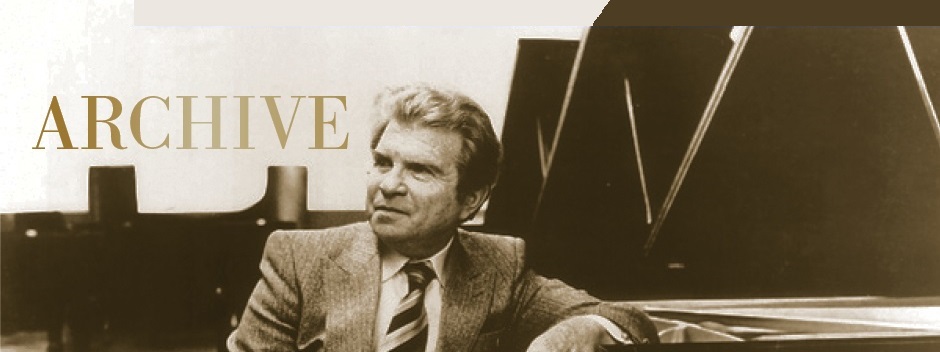Emil Gilels was born on the 19th October 1916 (6th October Old Style) in Odessa. Gilels did not come from a musical family: his father worked as a clerk in the sugar refinery and his mother looked after the large family. Whilst Gilels’ parents both had children from previous marriages, by an inexplicable twist of fate the union of Esfir and Grigory Gilels gave the world two outstanding musicians (three years after the birth of Emil the family rejoiced at the birth of his sister Elizaveta, who subsequently became a renowned violinist).
Music was loved despite the difficulties of uncertain times in Odessa and much attention was bestowed onto musically-gifted children. The Gilels family owned a piano despite living in a modest flat in the poor area of the famous Moldavanka. Already from the age of two the young Emil attentively tried its keys and listened in to the resulting sounds. He also reacted sensitively to all other sounds that he came across – the sounds of a passing wind orchestra, singing, and the peeling of bells. Gradually it became evident that the boy had perfect pitch of a rare accuracy, easily recognizing notes belonging even to unmusical sounds.
At the age of five and a half Emil was taken to Yakov Tkach, a famous piano pedagogue in Odessa. Emil completed his first period of studies with unprecedented ease. His hands did not need to be ‘positioned’ as they seemed to move so naturally around the keyboard. His extraordinary ear and memory helped him to quickly and easily assimilate all the necessary musical rudiments and grammar. In only a few months he was already playing all three volumes of Loeschhorn’s studies, and soon afterwards Clementi and Mozart sonatinas.
Having studied with the famous French pianist Raoul Pugno, Tkach’s pianistic genealogy traced back to Chopin himself. Nevertheless, the primary focus of Tkach’s pedagogical method was the development of his students’ technique: Tkach’s manner was severe and the young Gilels, a gentle and sensitive child who at home was surrounded by a loving atmosphere, tried to hide his feelings as suffered from the stern discipline of his teacher.
The pianistic development of Gilels progressed unbelievably quickly. Tkach had to constantly restrain his student. Emil loved rushing around the keyboard, and the more technically demanding the piece the more pleasure he derived from playing it. Away from his studies and in secret from adults Gilels improvised, thus compensating for the lack of attention from his teacher to the musical side of his playing. He was greatly attracted to theatre, composed a little and loved to imagine himself as a conductor. All this however happened at home whilst a severe drill awaited him in his lessons that subsequently formed the basis for his astonishing virtuosity – already at the age of eleven or twelve Gilels had been able to master etudes of Chopin and Liszt.
Despite some of the limitations of Tkach’s approach to Gilels’ development, he was the first to unmistakably identify the real worth of his young student’s gift. When Gilels was nine years old Tkach wrote in his report that ‘Milya Gilels possesses the abilities of one who is born solely for the purpose of becoming a pianist, and that with the required attention to his development, the USSR would in the future enrich itself with the acquisition of a world-renowned pianist.’ Tkach spared his brilliant student from the dangers of squandering his astonishing talent as an infant prodigy: concerts by ‘wunderkind’ were widespread in Odessa, and Gilels, greatly attracted to the stage, liked to play before an audience – but his teacher wisely restricted the number of his performances.
In May 1929 aged twelve, Gilels gave his first public concert. His programme included Beethoven’s Pathétique Sonata, Liszt’s Concert Etude Un Sospiro, a selection of Scarlatti sonatas, Mendelssohn’s Scherzo, and some of Chopin’s etudes and waltz, alongside other pieces. Following his performance it was not only or exclusively the great facility and virtuosity that amazed his sophisticated critics, but the depth and profundity of the interpretation as well as his astounding clarity and polish that was devoid of anything careless, trivial or unintentional. Throughout the huge artistic journey that lay before Gilels, these characteristics remained central to his Art.
For all those interested in Gilels’ unbelievable talent it was clear that he had already out-grown his teacher. Gilels dreamed of studying with Felix Blumenfeld, but Blumenfeld was already gravely ill at the time and died soon after. In the autumn of 1930 Gilels was accepted to the conservatory in Odessa into the class of Berta Reingbald.


